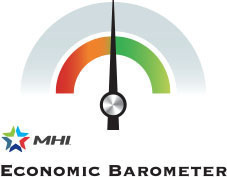BY JASON SCHENKER, PRESIDENT OF PRESTIGE ECONOMICS®, CHAIRMAN OF THE FUTURIST INSTITUTE®
The year 2023 was one of twists and turns. There were significant tech layoffs, a banking crisis, slowing inflation, Fed rate hikes, elevated geopolitical risks and AI obsession. While some of these events were fortunate breakthroughs, a few took the world by surprise in not-so-welcome ways.
This naturally leads to the question: was 2023 merely the storm before the calm or a sign of more turbulence to come? Looking to the year ahead, there are several positive dynamics for the economy that are conducive to growth. But the plethora of risks loom larger than in 2023.
Labor Market Supports 2024 Outlook
Most important for the outlook in the year ahead is the strength of the U.S. labor market. Job gains were substantial in 2023, and job openings were very high. This is crucial for growth because more than two-thirds of the U.S. economy is driven by consumption. The big secret here isn’t so secret: People with jobs spend money and contribute to economic growth.
Looking into the year ahead, job gains are likely to slow. But with such significant labor market tailwinds going into the year, the downside risks to growth could be mitigated by ongoing consumption potential driven by solid jobs. Meanwhile, high levels of open jobs represent a backlog of open jobs that would need to erode drastically before nonfarm payrolls would be expected to fall significantly. Is the unemployment rate likely to rise this year? Yes, but we believe it could be driven higher by new labor market entrants rather than a blowout number of layoffs.
Looking to the year ahead, there are several positive dynamics for the economy that are conducive to growth. But the plethora of risks loom larger than in 2023.
Inflation Rates Poised to Ease
Inflation rates fell sharply in 2023 compared to 2022. But it may still be many quarters before year-on-year consumer inflation for both the Total and Core CPI are closer to the Fed’s 2% target. We see significant potential for Total CPI to be at or below 2% in the second half of 2024, but Core CPI may not be below 2% until 2025. This doesn’t mean that we expect prices to fall for consumers. Instead, we expect price increases to return to low, stable rates.
This would be good news for businesses, consumers and housing. High interest rates have been painful, and the potential for falling inflation with rising unemployment rates could present a window of opportunity this year in which the Fed may cut interest rates. Any relief in interest rates would also be good for the U.S. government, which faces significantly higher debt service costs due to record levels of U.S. debt.
Click here to read the full article.
CHONLATEE42/SHUTTERSTOCK.COM
 MHI Solutions Improving Supply Chain Performance
MHI Solutions Improving Supply Chain Performance

